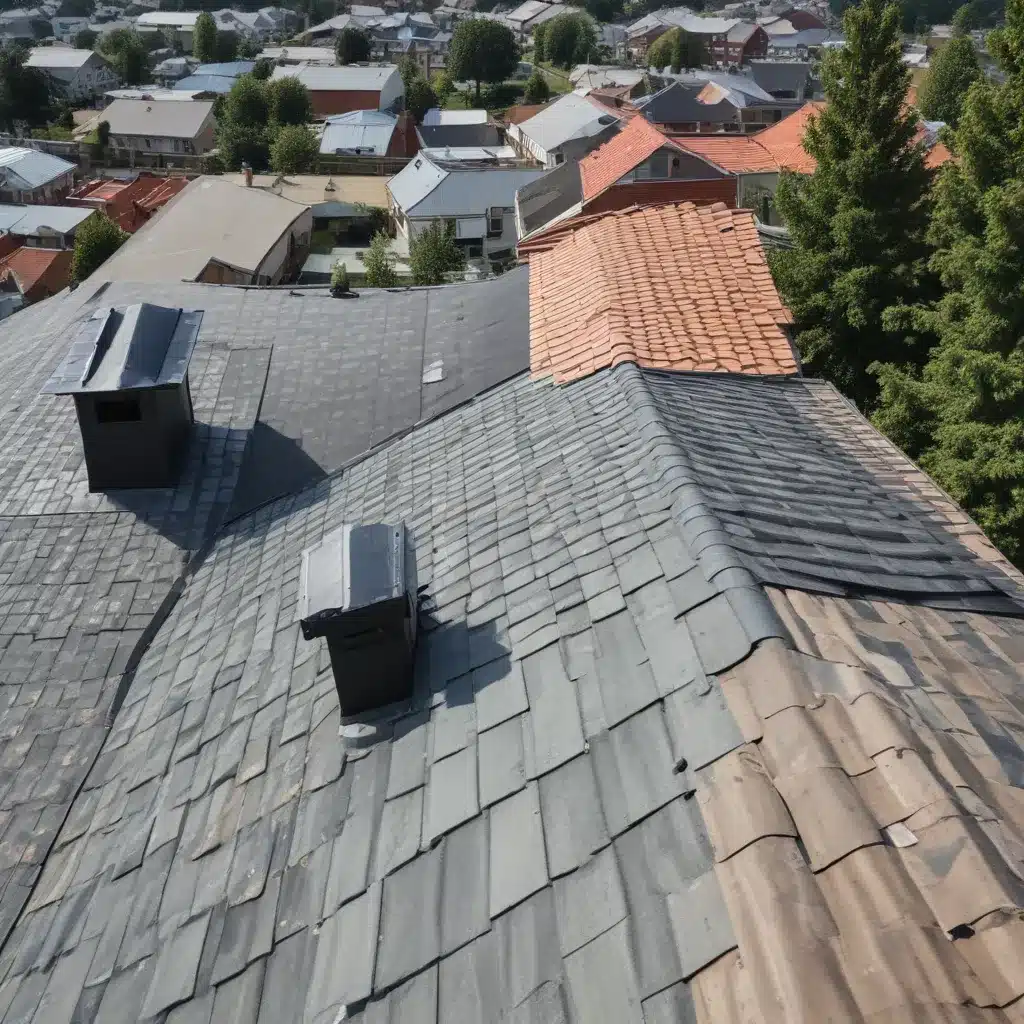
As a seasoned roofing professional, I’ve seen firsthand the transformative power of eco-friendly roofing systems. Whether it’s a local community center, a municipal library, or a public school, sustainable roofing solutions can deliver remarkable benefits that extend far beyond just the building itself. In this comprehensive guide, I’ll explore the various eco-friendly roofing options, share strategies for effective maintenance and repair, and delve into the cost considerations and installation best practices to help community and public buildings become more sustainable, energy-efficient, and environmentally responsible.
Types of Eco-Friendly Roofing Materials
When it comes to eco-friendly roofing, the options are both diverse and innovative. Sustainable roofing materials such as recycled plastic, metal, and even vegetated “green roofs” can significantly reduce a building’s environmental impact while enhancing its overall performance.
Energy-efficient roofing systems, like reflective “cool roofs,” are designed to minimize heat absorption and transfer, leading to lower cooling demands and reduced energy costs. These roofs often utilize materials that are highly reflective, emissive, or have a high thermal mass, effectively managing solar heat gain and insulating the building.
For a truly circular approach, recyclable and biodegradable roofing options, including materials like bamboo, cork, and even sedum-based green roofs, can be repurposed or naturally broken down at the end of their lifespan, minimizing waste and contributing to a more sustainable future.
Roofing Maintenance and Repairs
Maintaining the integrity and longevity of eco-friendly roofing systems is crucial for maximizing their benefits. Preventative maintenance strategies, such as regular inspections, cleaning, and proactive repairs, can extend the lifespan of these roofs, ensuring they continue to deliver energy savings and environmental advantages for years to come.
Addressing common roofing issues, like leaks, damage, or deterioration, in a timely manner is essential. Partnering with experienced roofing professionals who understand the unique requirements of eco-friendly systems can help identify problems early and implement effective, sustainable solutions.
By extending the lifespan of eco-roofs, community and public buildings can avoid the need for frequent, resource-intensive replacements, further amplifying the environmental and economic benefits of their investment.
Energy-Saving Benefits of Eco-Roofing
One of the primary advantages of eco-friendly roofing systems is their ability to enhance a building’s thermal performance and insulation. Green roofs, for instance, can reduce heat transfer, effectively regulating indoor temperatures and decreasing the reliance on energy-intensive heating and cooling systems.
This reduced HVAC demand not only lowers energy consumption and utility bills but also contributes to a smaller carbon footprint, aligning with the sustainability goals of many community and public buildings.
Moreover, eco-roofs can seamlessly integrate with renewable energy technologies, such as solar panels, creating a synergistic system that generates clean power while further enhancing the building’s energy efficiency.
Cost Considerations for Eco-Roofing
While the initial investment for eco-friendly roofing systems may be higher than traditional options, the long-term savings and benefits often outweigh the upfront costs. By considering the lifecycle expenses, including energy savings, reduced maintenance, and extended roof lifespan, community and public buildings can make a sound financial case for sustainable roofing solutions.
Fortunately, there are various financing and incentive programs available to help offset the initial expenses, from government grants and tax credits to specialized loans and rebates. Researching and leveraging these opportunities can make eco-roofing a more accessible and viable choice for community and public buildings.
When budgeting for eco-roofing projects, it’s essential to account for not only the initial installation but also the ongoing maintenance and repair costs. Proactive, preventative care can help maximize the return on investment and ensure the longevity of these environmentally-friendly roofing systems.
Professional Installation vs. DIY Roofing
While some community and public buildings may consider a DIY roofing approach to save costs, it’s important to carefully assess the skill level, safety, and regulatory requirements involved. Eco-friendly roofing systems often require specialized knowledge and techniques that may exceed the capabilities of in-house staff or volunteers.
Partnering with experienced, professional roofers who are well-versed in the installation of eco-friendly systems can ensure the project is completed safely, efficiently, and in compliance with all relevant permits and regulations. These experts can also provide valuable guidance on materials selection, maintenance strategies, and even potential financing options.
Seasonal Adjustments for Eco-Roofs
Eco-friendly roofing systems, especially those with a significant vegetative component, require special consideration for handling snow, ice, and weather extremes. Proper planning and preventative measures, such as specialized drainage systems and snow-retention mechanisms, can help safeguard the integrity of the roof and maintain its optimal performance throughout the year.
Effective vegetation management and irrigation strategies are also crucial for sustaining the health and vitality of green roofs, ensuring they continue to provide their unique environmental benefits. As the impacts of climate change become more pronounced, adapting eco-roofs to withstand these challenges is a crucial consideration for community and public buildings.
Community and Public Building Applications
Eco-friendly roofing solutions are particularly well-suited for community and public buildings, as they can enhance sustainability initiatives and contribute to a broader vision of environmental responsibility. By showcasing their commitment to green infrastructure, these buildings can serve as models and inspire other organizations to follow suit.
In addition to environmental benefits, eco-roofs can also improve indoor air quality by filtering pollutants, reducing urban heat island effects, and providing natural, biophilic elements that enhance the overall well-being of building occupants and visitors.
Finally, the aesthetic appeal and increased property value and curb appeal of eco-friendly roofing systems can be a significant draw for community and public buildings, attracting more visitors, tenants, and investment to the local area.
As a roofing professional, I’m passionate about the transformative power of eco-friendly roofing systems and their ability to positively impact community and public buildings. By carefully considering the options, investing in preventative maintenance, and partnering with experienced roofing experts, these institutions can lead the way in sustainable infrastructure and set a powerful example for others to follow. For more information or to discuss your specific roofing needs, please don’t hesitate to contact Roofers El Cajon.

